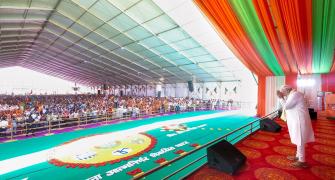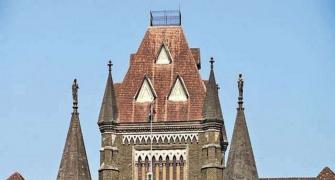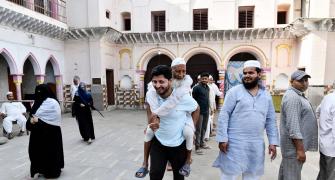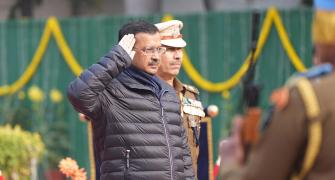You totally should says Lakshmi Sharath!
Stones do speak.
They have secrets hidden inside them, a haunting tale that has been probably witnessed only by them.
Each one has a story -- from legends of deities to chronicles of legendary mortals.
And yet, they leave it to us to put it all together, to piece together a little bit of history and myth and allow our vivid imagination take over.
There is a beauty in crumbling ruins, in mammoth temples, in majestic forts, in towering monasteries, in deep step wells, in quaint churches and ancient mosques.
What can be more romantic than sitting there in silence, listening to a lilting melody from a lone bird perched somewhere and watching the rays of the early morning sun light up these stone walls?
1. Rani Ki Vav, Patan, Gujarat

It is the Queen of stepwells and was built by a loving queen in the memory of her husband 1000 years ago.
Rani Ki Vav or the Queen's step well was built during the reign of Solankis by Queen Udayamati for her husband, King Bhimdev I.
The exquisite stepwell met its own fate when the floods of River Saraswati ravaged it and it was silted up for years until excavated recently.
Even today, only parts of the monument are visible in the circular part of the well.
The tinge of melancholy does not take away the magnificence of the step well which is over 64 metres long and 27 metres deep.
At every level, I stop and pause.
It is designed with pillared pavilions and a stepped corridor that takes you down many levels, and is adorned with sculptures on the panels.
The vav seems to be dedicated to Vishnu as various forms of the deity from the lores gaze upon you.
A narrow tunnel here would have allowed the royalty to escape in terms of dire need.
Irrespective of whether disaster stuck the Solankis or not, the Vav seems to have lost its value under the earth and even today, has many secrets that need to be unearthed probably.
2. Badami caves, Karnataka

There is something magical about a deep crevice in an outcrop which suddenly turns into a veritable art gallery the moment you step inside.
Badami or Vatapi as it was called was the capital of the early Chalukyas and their sculptors have carved every inch of the rocky surface into towering sculptures of gods and goddesses.
The sandstone boulders blush in the rays of the evening sun as I look at the emerald green Agastya lake below.
As I climb up and enter the caves, I wonder what possessed the sculptors who have chiseled and carved the rugged rocks into larger than life sculptures of Shiva and Vishnu besides the Teerthankaras.
The caves are as old as the hills here as they date to the 6th century.
I am mesmerised to find a mammoth sculpture of Shiva with 18 arms in different dance poses.
There is Ganesha and Karthikeya besides another carving of Shiva with Parvati.
Larger than life sculptures of Vishnu in the form of Trivikrama, Varaha and Krishna look at me in the second cave.
I feel humbled and dwarfed as I enter the third cave, the most beautiful of the four, where Vishnu sits on a coiled serpent besides being carved as Harihara and Narasimha.
The last cave has various images of Teerthankaras and Yakshas and Yakshis.
Sitting there and ruminating in silence, I am for a moment lost, until the monkeys distract me.
3. Gangaikondacholapuram, Tamil Nadu

This is a story that is a thousand years old, about a king who once ruled all of South India and beyond including Odisha and Bengal and also reigned over parts of South East Asia for over 250 years.
It is also a story about a forgotten town that was once flourishing, whose palaces were razed that has completely disappeared into thin air.
I am heading down to Tamil Nadu on a Chola Trail, to the 11th century capital of Rajendra Chola who built the Brihadeshwara temple here to commemorate his victory over the rulers of the Gangetic plain.
As I drive through the state highway, all I see are empty stretches of wastelands with some dry fields.
Looming in the distance and standing tall is the 160 feet high Vimana of a temple announcing its existence in this otherwise dead capital city.
The temple is so massive that it stands like a phoenix over the ashes of the old town.
Rajendra Chola built the temple similar in scale to the big temple built by his father Raja Raja Chola in Thanjavur.
He even made the defeated kings carry the water from the Ganges and fill it up in the reservoir.
The Vimana towers over you as every form of Shiva looks down at you from the niches.
A large sculpture of a lion in brickwork stands in the temple where a flight of steps lead inside like a tunnel into the huge well known as Simhakinar.
And yet he never completed the temple.
Sitting there in silence, in the middle of nowhere, with no town or village in sight, I look up at Shiva's smiling face as he anoints a young prince here.
There is a deep secret that is hidden somewhere and the stones are mute witnesses to the once flourishing capital which has vanished from the face of the earth.
4. Konark Sun Temple, Odisha
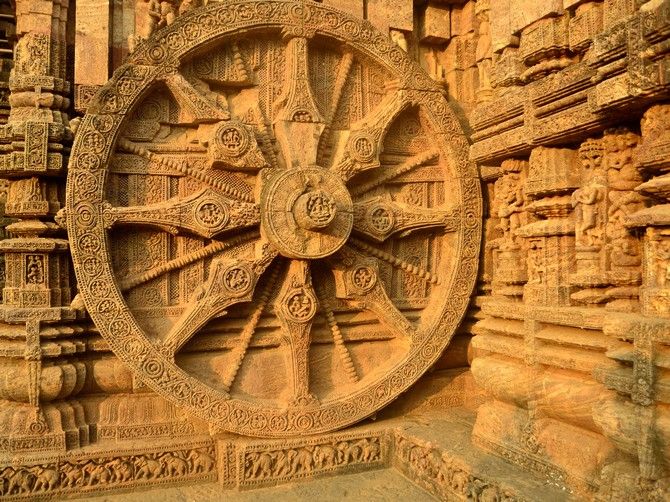
The Europeans may have called the Sun Temple on the sea shore at Konark as the Black Pagoda but it simply basks in the rays of the morning sun.
Built in the 13th century by King Narasimhadeva of the Eastern Ganga Dynasty, the 800 year old shrine was meant to be designed as a grand chariot drawn by seven horses as the sun rides across the sky.
Standing there and watching the sun rise, I realise that the temple is an ode to time.
The 12 pairs of stone wheels reflect the passage of time and the calendar months of a year.
A woman narrates her life story through her images around the eight spokes, reflecting the eight stages of a day.
For the Europeans, the temple was a distraction as it veered many ships off the coastline but for the tourists, the erotic sculptures, some in minitatures depicting explicit sensual scenes are a definite distraction as the amorous couples on the walls are locked in a passionate embrace, forgetting the cares of the world.
5. Mehrangarh, Jodhpur, Rajasthan
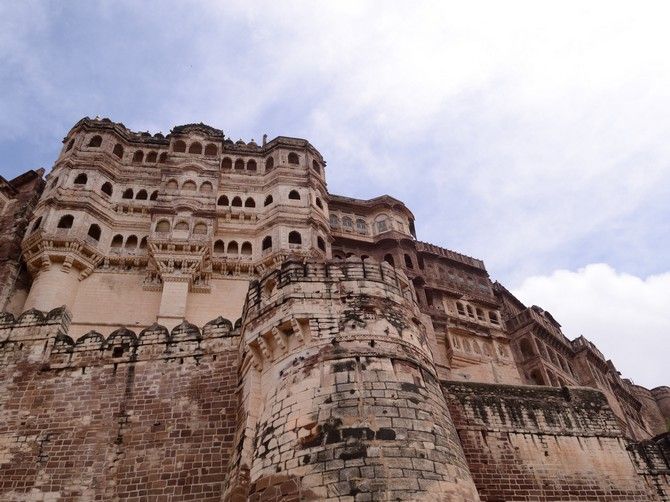
From the Sun Temple to the Citadel of the Sun, we move on to the formidable Mehrangarh that stands on the cliff, looking down at the blue-grey coloured tones of the old city from a height of 400 feet.
Built in the 15th century by the 15th king of the Rathore clan, Rao Jodha, Mehrangarh literally symbolises the birth of Jodhpur which became the capital of the dynasty.
I walk around and guides rush in to tell me that the fort has made it big at Hollywood as Nolan's The Dark Knight Rises shows rising from the underground chambers of a dark dingy prison with the fort looming in the background.
But it is the many lores that fascinate me.
A lone hermit who was uprooted from his abode when the fort was built cursed it.
A nobleman was buried here alive as a sacrifice to please the Gods; a soldier sacrificed his life, trying to protect it from its enemies.
After ambling along a bit aimlessly, seeing all the various galleries and the period rooms inside the museum, I head out towards the Chamunda Mataji temple and finally lose myself in the hues of the old town.
The city lay below cramped stroked by a large paintbrush soaked in shades of blue, like a midget standing awestruck at the citadel built by the giants as Kipling had described it.
You can post your Valentine's Day wish for India here.
Follow our complete V-Day coverage here.
Surprise your loved one with an awesome Valentine's Gift from Rediff!




